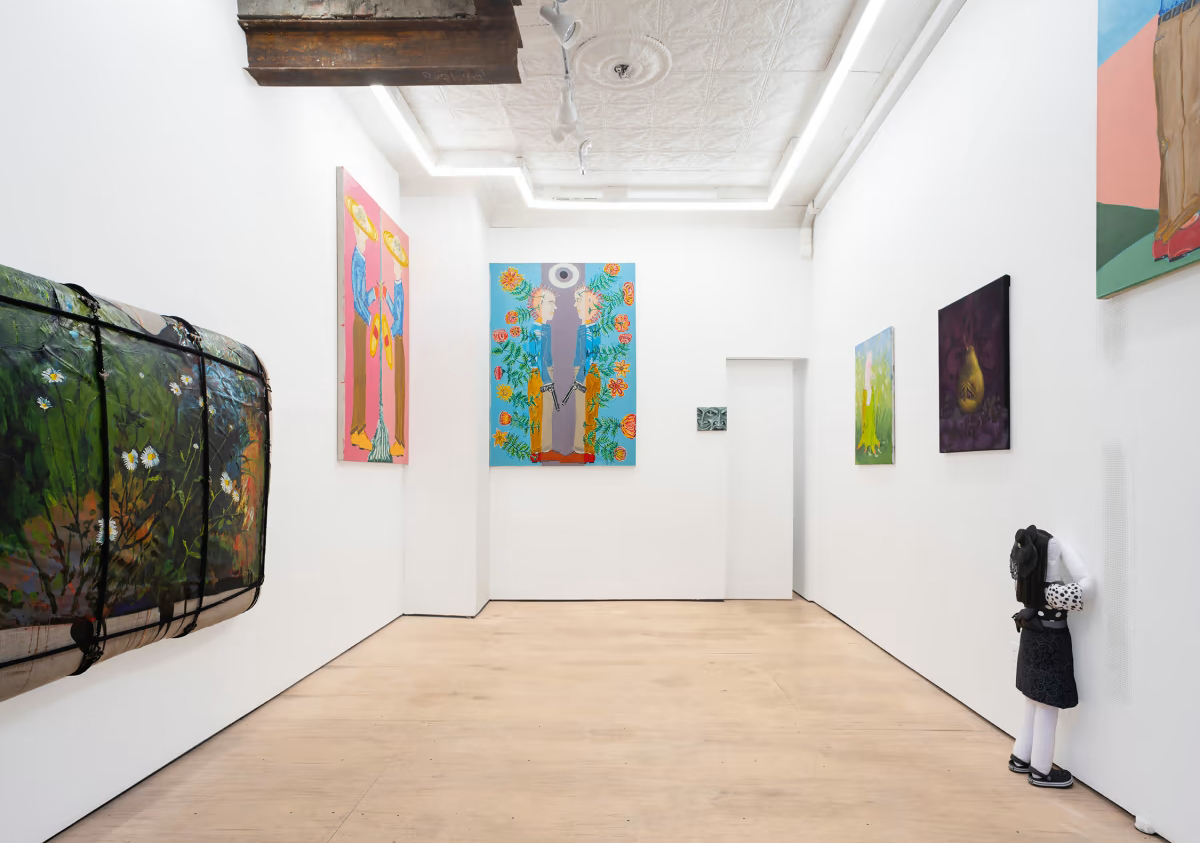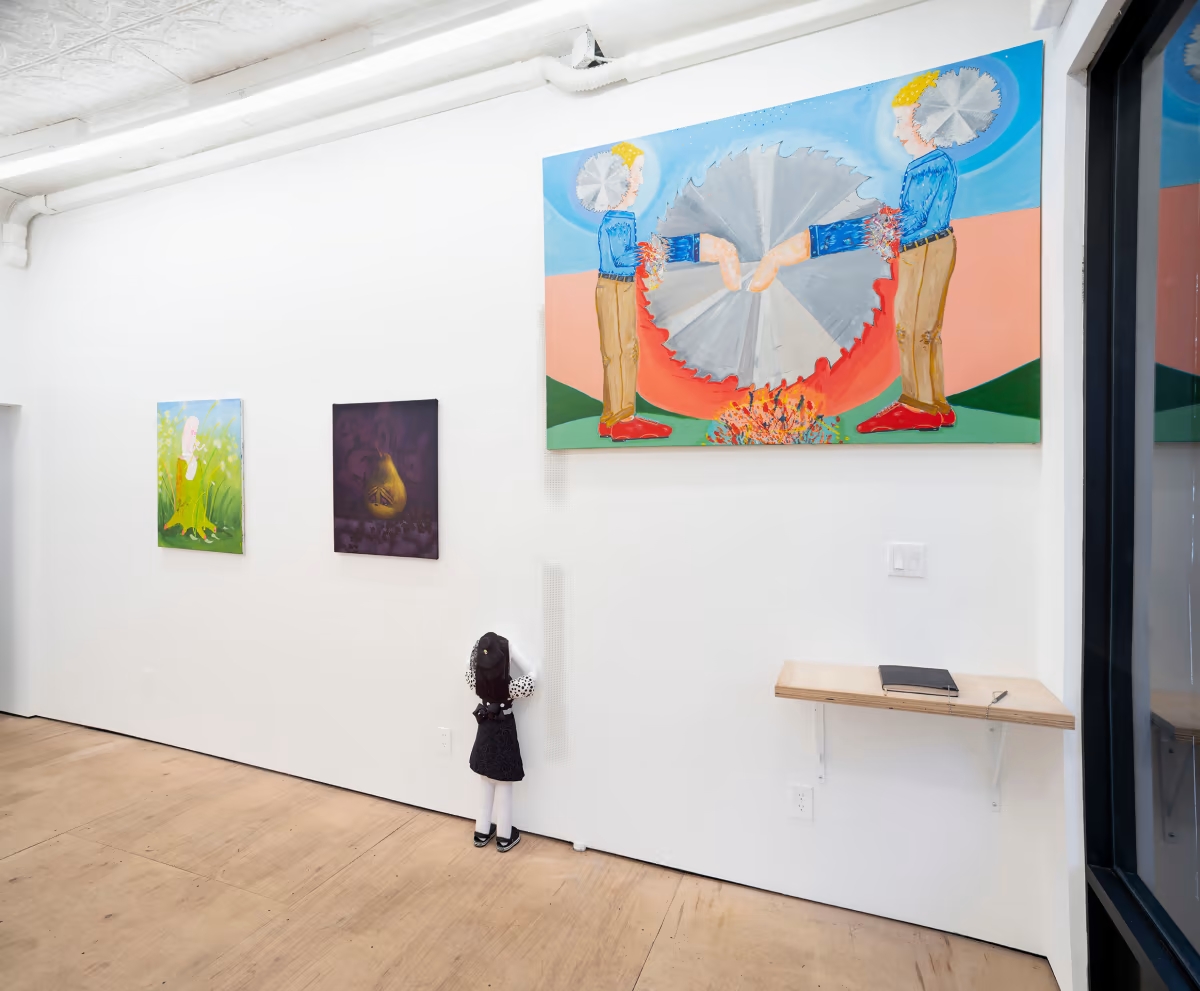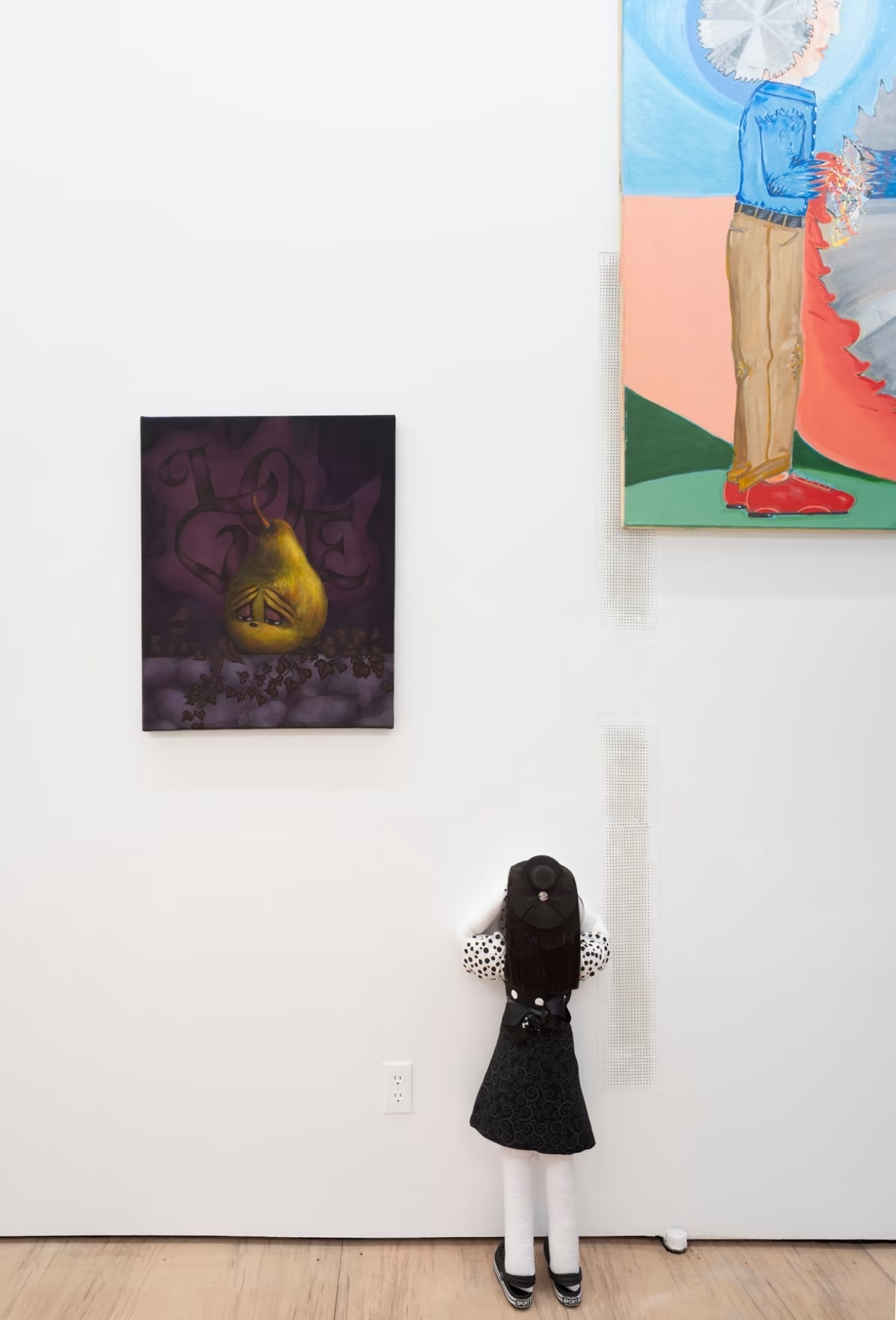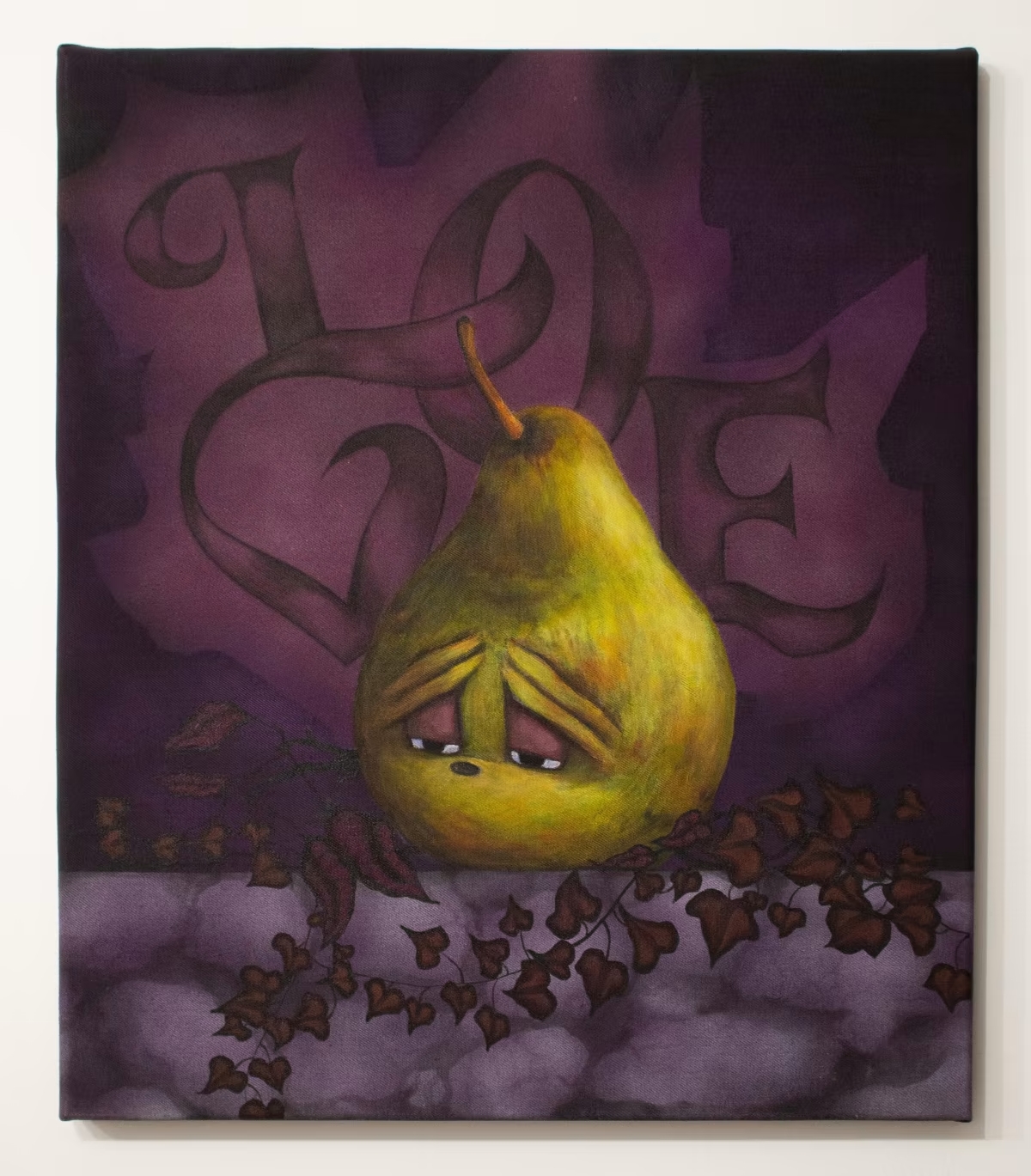The Next time I am Dreaming, I Will Realize That I’m Dreaming
No Gallery, New York City, New York (USA)
curated by Philip Hinge
Artists: Fred Escher, Abby Lloyd, Mia Middleton, Oskar Nilsson, Hélène Padoux, Vincent Tiley
June 23rd – August 7th 2022




Numbing is a gradual process. Over time feelings start to dull and the luster of sensation tarnishes. The first time you wake up to your arm asleep, your thoughts race and your heart rate elevates as you frantically try to understand what’s happened. Your synapses fire to no result. The fingers don’t twitch, the shoulder doesn’t rotate, and the arm remains limp. With your functional appendage, you reach across yourself to interrogate the lifeless limb. It has a weight you didn’t imagine something so slender could have. As you start to consider your life without the use of your arm, you feel the buzzing of blood as it starts to floo your veins. Quickly it travels down your shoulder and passes through your forearm before funneling into each fingertip. With all your concentration you make a loose fist for the first time sinc the panic of loss subsided. If anything, the experience has taught you that most things are temporary with the right mindset.
Fred Escher, who recently passed, left behind an expansive body of work that illustrates the eccentric mysticism of a complicated psyche. Scenes are translated through Escher rather than painted, with the work’s urgency and compulsive oddness being at the forefront of each picture. Standing opposite each other, Escher’s recurring pairs of orange-haired men wearin slacks admire each other with mouths slightly agape. Posed in staccato gestures, the figures mirror each other, standing at opposite edges of the canvas as pantomime columns amidst surrealist landscapes. Their complacency makes them semi-sweet; their attention is their own, and the viewer is left outside to wonder what exactly they’re talking about.
The work of the remaining five artists offers kindred affections through painting and sculpture, a dogged procession of like minds. Padoux and Nilsson utilize a lexicon of sentimental imagery. Ghosts and lonely pears timelessly lament the prospect of love yet to com and its inevitable passing. Tiley binds that sentiment with ropes, encircling and constricting that loss into an amalgam of formally compelling elements and abject construction. Lloyd’s doll refuses attention. Hiding in a brightly lit room, she channels trauma or executes a playful procedure; if I can’t see it, it can’t exist. Middleton expresses a darkly intimate style of painting, pursuing her small canvases with a grim economy of charged symbols.
These apparitions need no witness, as the circular nature of time abruptly confronts the rectangular edges of each canvas. Eccentric idiosyncrasies create a stage for a performance we’re all familiar with, each player exercising ruminations on grief, loss, humor, and a longing to exorcize an internal life.
Fred Escher, who recently passed, left behind an expansive body of work that illustrates the eccentric mysticism of a complicated psyche. Scenes are translated through Escher rather than painted, with the work’s urgency and compulsive oddness being at the forefront of each picture. Standing opposite each other, Escher’s recurring pairs of orange-haired men wearin slacks admire each other with mouths slightly agape. Posed in staccato gestures, the figures mirror each other, standing at opposite edges of the canvas as pantomime columns amidst surrealist landscapes. Their complacency makes them semi-sweet; their attention is their own, and the viewer is left outside to wonder what exactly they’re talking about.
The work of the remaining five artists offers kindred affections through painting and sculpture, a dogged procession of like minds. Padoux and Nilsson utilize a lexicon of sentimental imagery. Ghosts and lonely pears timelessly lament the prospect of love yet to com and its inevitable passing. Tiley binds that sentiment with ropes, encircling and constricting that loss into an amalgam of formally compelling elements and abject construction. Lloyd’s doll refuses attention. Hiding in a brightly lit room, she channels trauma or executes a playful procedure; if I can’t see it, it can’t exist. Middleton expresses a darkly intimate style of painting, pursuing her small canvases with a grim economy of charged symbols.
These apparitions need no witness, as the circular nature of time abruptly confronts the rectangular edges of each canvas. Eccentric idiosyncrasies create a stage for a performance we’re all familiar with, each player exercising ruminations on grief, loss, humor, and a longing to exorcize an internal life.